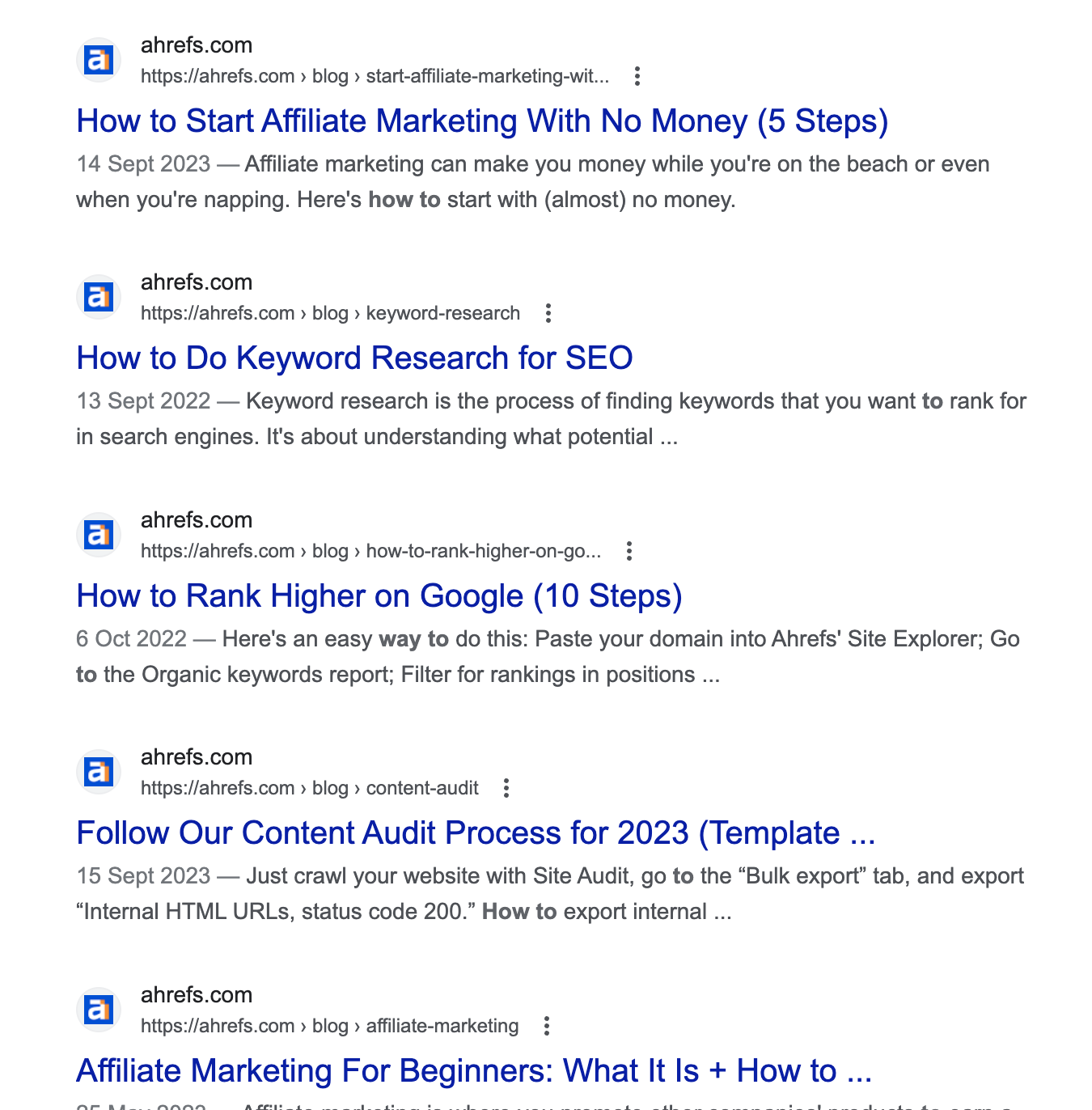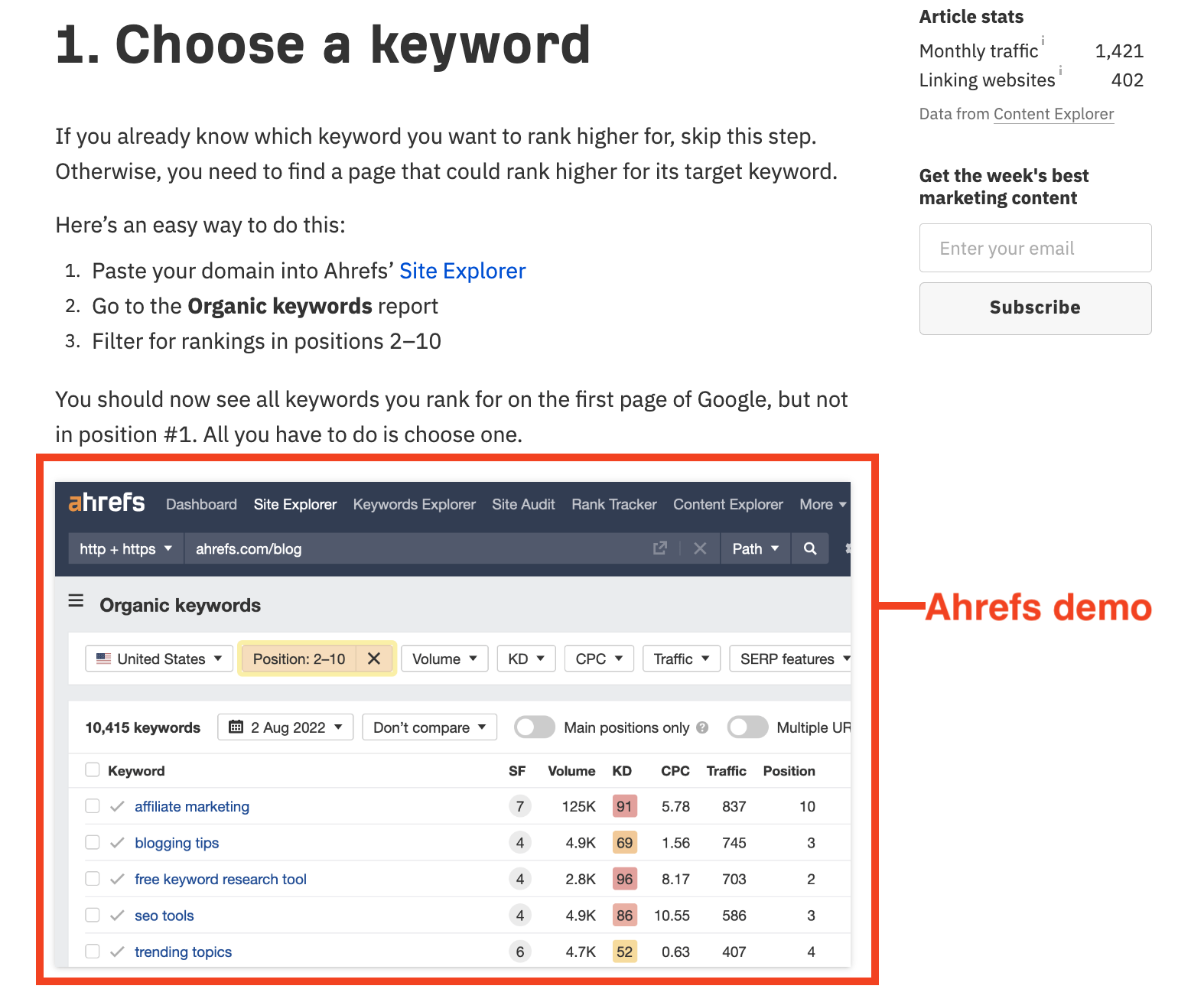There’s nothing worse for a marketer.
You know you need content. You know it’s got to drive actual business growth (revenue, leads etc). But you’ve no idea what to produce.
If you’re fed up of looking at an empty screen, this piece is for you.
I’m outlining the 4 key content categories that have to be included in your content strategy to not only generate traffic, but sales and business growth.
These not only help get results, but also make it a lot easier when you’re trying to figure out what to create.
Oh, and if you’re wondering if this works for a specific channel (social, video, written), fear not. This category approach work regardless of content type or channel.
Now, let’s get into it.
The 4 core content categories you need to produce
You can generate outsized gains with your content marketing by focusing on 4 core content categories.
Each has its own place in the overall strategy and a complete strategy should include all elements.
There is, however, an order I would recommend to producing these to get results faster. I’ll touch on that later.
For now though, let’s take a quick overview of the content categories you’ll need to consider.

- Buzz – Get people talking about you
- Attract – Attract potential customers to your brand
- Convert – Get customers to make a purchase
- Trust – Build trust and prove you’re worth their time/money
Let’s dive into these in a little more detail.
Content category 1 – Buzz creating content
It doesn’t matter what channel or content format you’re using, there’s always some form of algorithm to play to or crowd to stand out from.
You need a couple of pieces of content that will help you stand out from the crowd and get talked about.
That is the sole purpose of content within this category.
They’re there to get people talking about you and, as a result, promote you to their audience – either purposefully or as a result of the buzz-generating piece being so good they wan’t to spin their own take on it for their audience. For example…
- If you’re growing a website, these pieces get you backlinks that increase DA and overall Google rankings
- If you’re looking at video marketing, these pieces get referenced and cited in other people’s videos
- If you’re focusing on social channels, these pieces get loads of engagement and a higher CTR to drive traffic to your owned assets
- And in all cases, they can provide a nice little lift in referral traffic
Don’t misunderstand this.
A lot of brands think that they can write a piece that explains their new feature and push a boring press release to get those links and exposure. You see them all the time on services like PR Newswire.

These are boring and not of any real value to anyone.
People don’t give a crap about your features.
What they care about is how it affects them. Specifically how large developments in the industry affect them.
If you don’t focus on how things affect your users when looking to generate buzz, this whole category will fall flat and you’ll have wasted time and money.
Let’s look at some examples of how to do this right.
Examples of good buzz-generating content
You’re essentially looking to create content that can be used as a source by other content creators.
You’ll have seen this a lot. When someone produces a piece of content with original research, or they curate existing stats into a new report, they get talked about in other industry publications and mainstream media.
Mainly because most content creators are too lazy or busy to do that hard graft themselves.
The primary forms of content I’ve seen do well here include…
- Original research (you do a study and create a piece that explains the results)
- Curated research (you curate existing stats into a new report that helps users)
- Some kind of publicity stunt or experiment – ideally one that captures current interest or is a controversial take on popular opinion
One of the best I’ve seen in this space is Fery Kaszoni at Search Intelligence. Fery and team help their clients create interesting reports or unique takes on their industry.
They produce a piece of content around it, and then get journalists to write about it.
For example, for one of their fitness clients they analysed the BPM of popular Spotify songs from the summer, and created a playlist of the most recent summer hits that are great to work out to.

This piece got picked up by a lot of major publications and the client received a lot of great backlinks.
A couple of other people you should check out for creating buzz and getting mentioned include…
- Max Fosh – does a lot of stunts that get picked up by a lot of people (my favourite example)
- Tom Scott – does a lot of interesting original reporting and experiments that are a little unusual (my favourite example)
You might be looking at these and thinking “I can’t do that”. And you’re right.
RIght now, you might not be able to compete with these people who are 1§0 steps ahead of you on this journey. But you’re not competing with them.
You’re competing with the other brands in your space who are too lazy to produce anything other than basic articles.
Just do more than the other players who are doing another “we’ve released a new feature” post.
Content category 2 – Attract potential users to you
Buzz content helps build your authority and tell the various search and social algorithms you should be promoted. They also help build a little brand awareness.
But, they’re not really going to attract users who are in need of whatever it is you sell.
The purpose of content is to bring in qualified leads and buyers for your services/products.
The best way to do this is with content that answers key questions they have.
A lot of content creators default to the Hub and Spoke model popularised by Hubspot here.
It’s not a bad method for brands that have an existing high DA.
But, you’re often producing content that’s high in the funnel and has no real purchase intent.
For example, a lot of brands will create content like…
- What is X
- Intro to Y
- Generic thought leadership pieces on the industry as a whole
These pieces get a lot of search traffic, but have no real purchase intent. And they’re hard to rank for meaning most brands get 0 benefit at all from them.
To attract users and customers to your brand, you need to focus on content lower down the funnel.
I’ve put a free training on this together (which you can access below) but you basically want to focus on a few content formats for this.
- Review pieces with actual expert analysis (not a copy-paste job from somewhere else)
- Comparison of A vs B offers – again with expert analysis and reasoning
- “How to” type articles that help the user actually address the problem they face
The reason the focus is on these elements is because people searching for these kinds fo things are in search of a solution to a painful problem.
If you can solve that problem in a way that uses our product/offer, you build trust and help convince them that your offer is worth trialling.
Here’s a few good examples.
Examples of good attraction content
Here you’re not looking to optimise a piece based on keyword intent, but instead on problem solving for your users.
You basically want to research the biggest problems your ideal users face, and create content that soles it for them.
It’s less about keywords, more about helping ideal customers. And, of course, if you can solve the problem whilst demoing your product it’s a win-win.
One of the best I’ve seen with this is the Ahrefs blog (I’ve done a full analysis of Ahrefs here).
First, they identify problems their ideal users have and find what kind of searches people will be searching for to sole that problem (problem first, then keyword research).
Which, for Ahrefs would be things like…
- How to rank higher
- How to do [SEO TASK]
They then produce a lot of content that answers these user problems.

They double down on this by showing within the pieces how to solve the problem using Ahrefs. It’s basically a product demo in a solution-led piece.

Because they’re targeting problems, they get traffic for people looking for a solution.
And in the articles they position their service as the easiest way to get that solution.
This is what a lot of people are not doing. They chase traffic numbers over potential customers.
I’ve written before on Ahrefs and their marketing approach and still believe that they have one of the best examples of driving customers through content.
Sole the pain, attract the buyer.
Content category 3 – Conversion-focused content
Buzz helps tell the algos you’re to be trusted and builds brand equity.
Attraction content brings in users who are looking for a solution you sell.
Now, you need to sell them on your product or service with conversion-focused content.
Usually, this isn’t going to be a blog or video (could be a sales video I guess), but will instead be some form of sales page.
It’ll be a piece of content that talks about the benefits of hiring you and the features of what’s actually delivered.
These kind of pieces don’t get a tonne of search traffic. However, they can be promoted through things like ads or direct outreach.
I’d also recommend making sure that your attraction content links directly to the sales content with natural, in-content links.
IMAGE HERE
This way you’re bringing people in and then giving them the next step they need to take.
Let’s take a look at some good examples fo sales content.
You’ve likely already got a landing or sales page for your offer set up. But if you’re not sure whether or not it’s as good as it could be, you’ve got 2 options.
- Take the lead of the below examples
- Check out our landing page audit service where I’ll do a full analysis of your sales page and offer insights on how to improve it
And that right there is a real example of how to move people from attraction content to sales content 🙂
Now, onto the examples.
Examples of good sales content
Over the years I’ve written and advised on hundreds of sales pages and have analysed thousands.
Generally, I’ve found the best sales content fits a simple template and structure.
- Lead with the core benefit in realistic terms.
- Explain the problem they face right now and what it’s costing them.
- Introduce the solution and explain the benefits.
- Call them to sign up.
A lot of the best sales content out there takes this format.
A good example I found recently was Somnifix.
Honestly, I’m not 100% sure on the product, but their home page is a real example in how to do this well.

The page is a great example.
It’s clear, easy to understand, and the benefits are well explained.
There are also good images of the product in action so the user knows what they’re getting.
They don’t have much content on the site, but if they were to produce content for things like “how to reduce open mouth snoring” they could generate traffic of people that would be keen to purchase the offer.
Content Category 4 – Trust-building content to prove it works
The above 3 categories will give you pretty much everything you need for a decent content strategy.
However, you might find some people are a little hesitant to actually sign up to your offer.
They’ll want to see proof that it actually works before they take any sort of action.
There are, in my experience, two methods to approach this sort of content.
- Case studies of client success
- Detailed examples of you doing the thing with a transparent view of the results
Case studies can tend to be a little dry.
I prefer the second approach because it’s a little easier to then find that overlap between what you’re doing and what the user wants.
For example, if you’re looking at content marketing, a case study might be…
- How we helped [CLIENT A] double traffic in 6 months
It’s fine, and likely what enterprise clients need to see. But a lot of people don’t read that stuff.
I personally gravitate more towards people who would write something like…
- How I got the top 3 Google results for high competition terms in a regulated industry
There’s something that feels more genuine about the latter.
Examples of good trust-building content
I love the people out there who are running constant experiments with their marketing to get the best results.
One of my current favourites in the SEO space is Matt Diggity.
Matt’s an SEO expert and he runs constant experiments to see what’s actually working. He then chronicles and details his approach to help others achieve similar results.
Prime example here.
This is, in my opinion, a great way to show you actually know your business and can help people achieve the same (because you’ve actively done it).
Choosing which content category to produce
Here’s the big question.
Which content category should you produce right now?
Well, it’s dependent on your business and where it is in its growth cycle.
I always advise people to start with the money-generating pieces first.
Sure, these might not generate a lot of traffic, but they’re doing the heavy work of paying your bills.
By focusing here first, you have a mechanism that gets people to open their wallets. You can always manually promote your conversion asset and work on creating the passive traffic generation later.
Work out how to get the sale first and everything else falls into place.
Once the conversion content is done, I work on trust content next.
You want to remove as many barrier to the purchase as possible so get the proof pieces together to make the purchase seem like a no-brainer.
From there, it’s a split between buzz and attraction content.
The missing piece to effecting content marketing
The thing few ever talk about here is distribution.
I know far too many people who put hours into producing content only to then do nothing with it.
They expect Google to pick up the slack and send them traffic when they need it. It doesn’t work that way sadly.
The best content marketers out there know that this is a game of produce once, distribute forever.
You have to be on top of your distribution strategy.
The web is a noise place and without a solid distribution strategy you’re going to see traffic stagnate.
I’m putting a distribution guide together, but we also have a lot of info on that included in the Content Marketing Model here.
